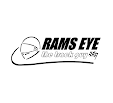GM finally announced pricing for the new, 2014 Cadillac CTS and it was given a proper price tag to match the move upwards Cadillac made with the 2014 model year (full post: 2014 Cadillac CTS). The current and previous CTS models have been stuck between the compact and midsize luxury segments and their sizes and prices reflected that. Now that Cadillac has a proper entry into the compact segment, the ATS, the CTS can comfortably move into the midsize luxury segment.
The third generation CTS sedan grows in size and interior space. It is now five inches longer than the outgoing model and interior space reflects the increased size. Despite the increase in size, the new car is 244 lb. lighter than the previous model and sits lower which should give it handling dynamics to match the excellent ATS. The CTS is expected to be the lightest car in its segment.
The 2013 CTS standard model will start at $46,025, including $925 destination fee, which is an increase of $6,005 over the outgoing model. For that, you get more luxury, interior room, power and features with more than 20 new standard features compared to the outgoing model. A 2.0 litre turbocharged four cylinder engine or 3.6 litre naturally aspirated V6 engine will be available in rear wheel drive or all wheel drive with three collections of option packages - Luxury, Performance and Premium.
The standard engine will be the 2.0 litre turbo engine which puts out 272 hp and helps propel the car from 0 to 60 mph in 6.1 seconds, which is 1.5 seconds faster than the outgoing base model with the 270 hp, 3.0 naturally aspirated V6 engine. No estimates were given for the 3.6 litre V6 but expect a mid-5 seconds run to 60 mph. Brembo brakes with ferritic-nitro carburizing (FNC), anti-corrosion rotors are standard and Cadillac expects the brakes to give the car best in class braking performance. Finally, following what Cadillac did with the ATS, Magnetic Ride control is now standard on base models with 18-inch wheels, instead of being exclusive to the CTS-V. With class leading brakes and suspension and possibly best in class weight, the new CTS should be excellent to drive.
If you want to make even better use of the chassis, a third engine option is now available for the CTS - Cadillac's new Twin-Turbo 3.6 litre V6 engine which makes an SAE-certified 420 hp (for more information, head to 2014 Cadillac CTS). The engine is comes with the Vsport model which contains the highest-performing components, such as the twin- turbo engine and an electronic limited slip differential. The Vsport model will start at $59,995, including $925 destination fee. It will be the top of the line model and the most powerful, until the CTS-V becomes available, and will come only in rear wheel drive and an eight-speed automatic transmission.
Every CTS will come with adjustable drive settings for touring, ice and snow, or sport driving to adjust vehicles' dynamics. The CTS Vsport model will come with an additional drive mode for the track with specific Magnetic Ride Control calibration and enhanced throttle progression for greater track performance. It's unknown whether driver assists, such as traction and stability control, can be fully defeated for the track though so we'll have to wait for a test drive to find out.
Like all other Cadillacs, the CTS will come with the CUE, Cadillac's infotainment system which is supposed to resemble tablets in interface and functionality. The CUE system features an 8 inch fully reconfigurable touch screen. An additional 5.7 inch display screen is located in the instrument cluster to allow the drive to control radio, phone and navigation functions through steering wheel controls without having to take his eyes off the road. A premium, 11-speaker Bose audio system with HD radio capability will come standard on every CTS.
The 2014 Cadillac CTS sedan arrives in dealerships this fall and should position Cadillac to better compete with German luxury automakers with two separate entries for the compact and midsize luxury segments.
Source: Cadillac
















Comments
Post a Comment